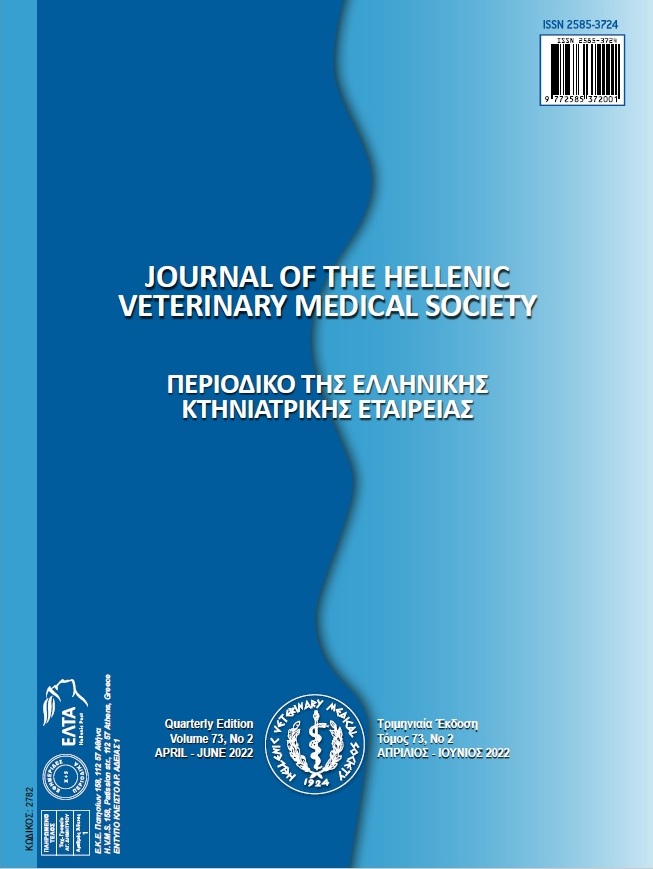Evaluation of diagnostic methods for the Detection of Bovine Coronavirus and Rotavirus in feces of diarrheic calves
Abstract
The purpose of the present study was to evaluate the efficacy of Enzyme-Linked Immunosorbent Assay (ELISA), immunochromatographic (ICG), and reverse transcription-polymerase chain reaction (RT-PCR) methods for the detection of rotavirus (RV) and bovine coronavirus (BCV). Feces samples were collected from 90 diarrhoeic calves (male and female) up to one month of age and the immune response against RV and BCV infection was assessed by using ELISA (Ag and Ab), ICG, and RT-PCR. To determine the performance and accuracy of each diagnostic method in comparison to the diagnostic gold standard (RT-PCR) method, different statistical tests including receiver operating characteristic curve (ROC), concordance correlation were used. Results shown the prevalence of RV and BCV and RV+BCV according to RT-PCR were equal to 8.89 (95% CI: 6.64-10.07), 14.44 (95% CI: 11.23-6.90), and 2.22 (95% CI: 0.89-3.72), respectively. The best agreement and the highest sensitivity and specificity were obtained between the RT-PCR and AgELISA (100% and 94.3%), and then AbELISA (100% and 94.3%) was the second-best test and also the ICG test (95% and 94.3%) was less accurate method in comparison to ELISA methods for identifying RV and BCV, but a good correlation and concordance between ICG diagnostic techniques and RT-PCR were observed. To put it in a nutshell, our results suggest that the ICG assay may improve the ability to diagnose calves RV and BCV infections accurately and quickly. Promoting rapid IGG kit with higher accuracy in early diagnosis of the cause of diarrhoea plays an important role in its therapeutic regimes, management protocols, and control procedures, but ELISA is preferred due to more precise results.
Article Details
- Zitationsvorschlag
-
Hamedian-Asl, M., Zakian, A., Azimpour, S., Davoodi, F., & Kahroba, H. (2022). Evaluation of diagnostic methods for the Detection of Bovine Coronavirus and Rotavirus in feces of diarrheic calves. Journal of the Hellenic Veterinary Medical Society, 73(2), 3951–3960. https://doi.org/10.12681/jhvms.23704
- Ausgabe
- Bd. 73 Nr. 2 (2022)
- Rubrik
- Research Articles

Dieses Werk steht unter der Lizenz Creative Commons Namensnennung - Nicht-kommerziell 4.0 International.
Authors who publish with this journal agree to the following terms:
· Authors retain copyright and grant the journal right of first publication with the work simultaneously licensed under a Creative Commons Attribution Non-Commercial License that allows others to share the work with an acknowledgement of the work's authorship and initial publication in this journal.
· Authors are able to enter into separate, additional contractual arrangements for the non-exclusive distribution of the journal's published version of the work (e.g. post it to an institutional repository or publish it in a book), with an acknowledgement of its initial publication in this journal.
· Authors are permitted and encouraged to post their work online (preferably in institutional repositories or on their website) prior to and during the submission process, as it can lead to productive exchanges, as well as earlier and greater citation of published work.



